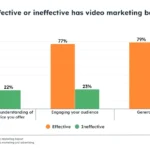Welcome to Creator Columns, where we bring expert HubSpot Creator voices to the Blogs that inspire and help you grow better.

One of my favorite parts of experiential marketing is the research and discovery process. Often overlooked, I believe that spending a good amount of time exploring data can make all of the difference when it comes to planning your next successful event.
![Download Now: Event Planning Checklist [Free Download]](https://no-cache.hubspot.com/cta/default/53/41b0d638-6665-493a-8d8f-b1710e93d44b.png)
Data isn’t just found in pie charts and exported Excel graphs, it’s everywhere you look. Key insights and learnings are swirling around you as you move through the world, catch up with close friends, or overhear conversations at a coffee shop.
These sentiments can all contribute to curating your next event and planning out your consumer journey — ensuring that your attendees feel seen and considered.
1. Before you can truly dive into your research, spend some time getting clear on the problem you’re solving.
It can be tempting to go into the world, ready to conquer every challenge your business could potentially face, but the key to successful research and discovery is focus. Spend time getting clear on what problem you want to solve, how you plan to discover insights about it, and what key takeaways you’re looking for.
This can help ensure you stay on course and avoid getting distracted as new problems or challenges arise in the process.
Ultimately, the goal of research and discovery is to be outcome-oriented. This exercise should help to provide clarity against key questions that you have. There will be time to focus on new challenges but staying aligned with the task at hand is a key component to avoiding overwhelm and burnout.
Once you’ve decided the problem you’re looking to solve, spend a considerable amount of energy on where you can find the audience to answer your questions.
Immerse yourself in your audiences’ work and dive deep into their interests, preferences, and behaviors. You’re not just asking, “Who are they?” but also, “What moves them?”
For example, since CultureCon is dedicated to creating community and resources for Black creators and entrepreneurs, we need to consider what they want to experience that aligns with their career aspirations and community goals. We need to know where they get their news from, what they like to do for fun, and what inspires them.
Learning this information can allow us to speak directly to their experiences and invite them to see themselves in the event.
2. Listen to your audience and keep an open mind.
Now that you’ve identified your audience, it’s important to become an active listener.
Remember, while this business or event is important to you, it is not your “baby.” Keeping this in mind can help you distance your personal beliefs and ego from the feedback you’ll receive so that you can objectively digest what comes your way.
There are many ways to incorporate active listening and establish feedback channels in your research process including:
- Focus Groups: Personally, I love focus groups because they provide an environment where participants can engage in open and honest discussions that provide nuance that can often be missed in surveys or other quantitative methods.
- Surveys: Pre and post-event surveys are another great way to listen to your audience and understand what they want more of. In your survey, try to stick to one or two open-ended questions and make the rest multiple-choice so that you have an easier time reading the data.
- Don’t ignore the comment section: The comment section is a great place to engage in active listening. Dive into the comments on your social pages to gauge what attendees are excited about or concerned with and use those findings to guide your event and marketing strategies.
3. Get out and explore.
Beyond the digital screen, there are so many other ways to conduct research and discovery IRL. Explore different events in your city and ask friends what experiences they’re excited about over dinner.
All of these learnings can inform key trends and insights for the event that you’re building. Avoid the temptation to try and become everything to everyone. Remember that learnings only need to be implemented if they are useful and applicable to what you’re hoping to build.
Remember that you are also your audience — what gaps are you experiencing, and what do you wish there was more of? Answers to these questions can prove to be extremely helpful.
4. Analyze your findings and follow the data.
Now that you’ve collected your feedback, it’s time to make sense of it. I like to organize the data into categories — positive, negative, and neutral feedback — and then I begin to look for patterns.
This is an opportunity to see raw and unfiltered information for your business. It may not all apply but it can be helpful to see where there may be potential blind spots in your strategy or approach.
Read more:
- How Experts Use AI for Customer Feedback Analysis
Quantitative data can show overall trends, while qualitative feedback can give you deeper insights into why certain aspects succeeded or failed.
Remember: All of this data can work together to inform a holistic story. Don’t just look at the numbers — context matters.
For example, if you choose to provide a rating system for your event, include a follow-up question like “What could change a 7 to a 10?” This answer can help to convert a lukewarm attendee into a brand enthusiast.
5. Take action.
Research and discovery only work if you act on the insights you’ve gathered. Take the data you’ve analyzed and use it to inform your next steps. What are the key points that bubbled up in the feedback and how can you take one small step towards implementing a plan of action?
Pro tip: Look for patterns and prioritize feedback that has a common theme. Remember that not every suggestion needs to be implemented, but if several guests mention the same issue (like unclear communication or super long wait times for food), those topics should be top priorities for your next event.
6. Iterate, improve, and repeat.
Research and discovery is an ongoing process. Once you’ve implemented the changes, gather feedback again. Did the feedback lead to active change? Did the changes work? What’s the next area you can tackle?
With each phase, you can continue to refine and elevate the experience, ensuring you’re constantly optimizing, improving, and staying in touch with your community’s needs.
Key Tip: Make feedback loops a regular part of your process, not just a one-off event. This way, you’re always evolving and improving based on real, timely insights.
Creating a feedback loop for research and discovery involves listening, analyzing, acting, and then repeating the process. It’s about creating a culture of constant improvement where every event or project iteration is more aligned with your audience’s needs and expectations.















Comment here